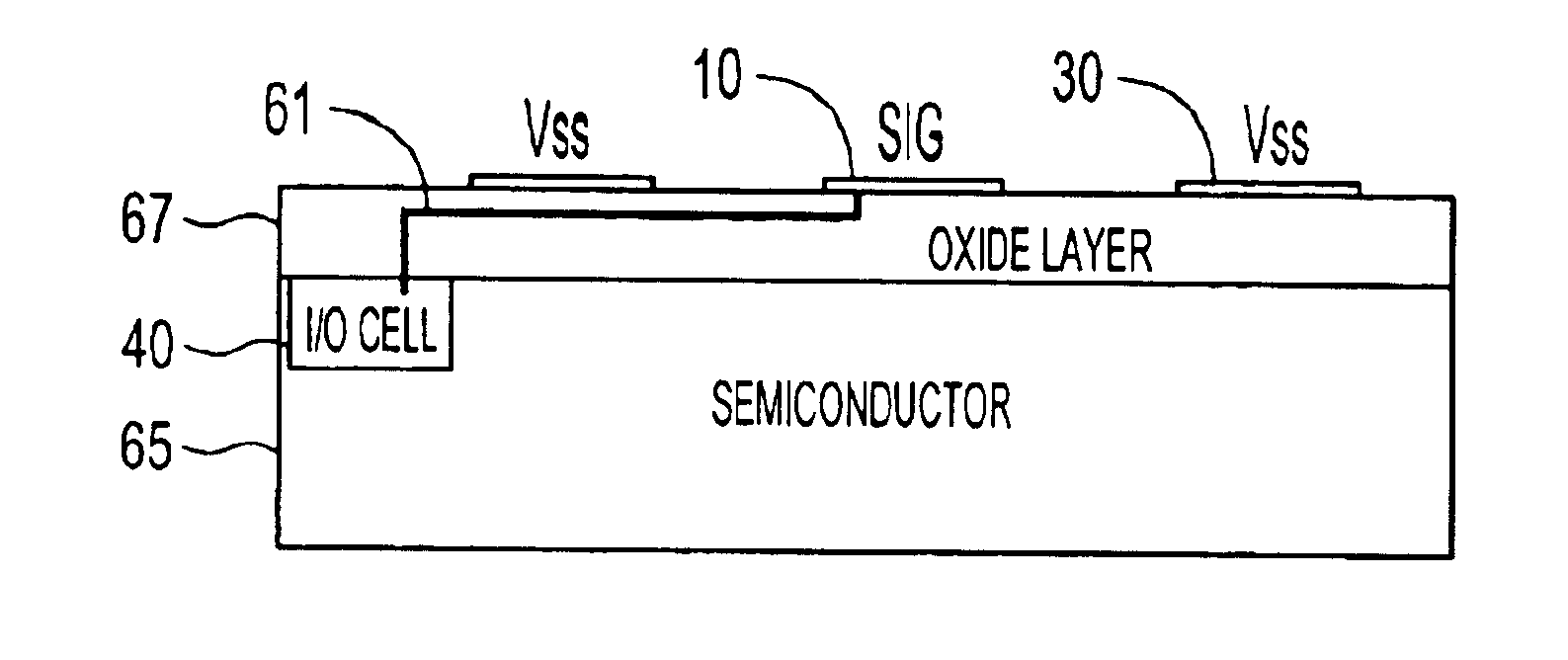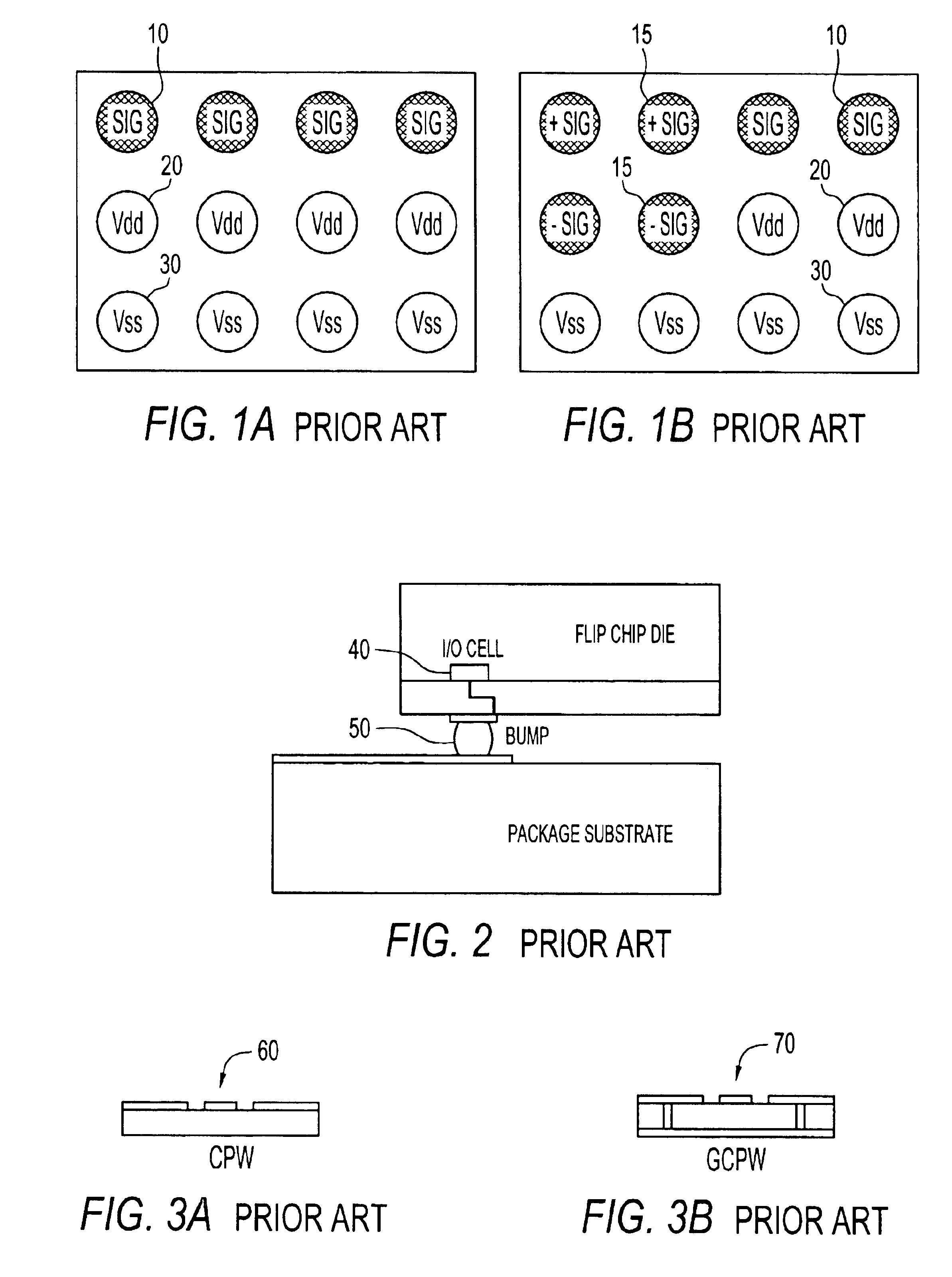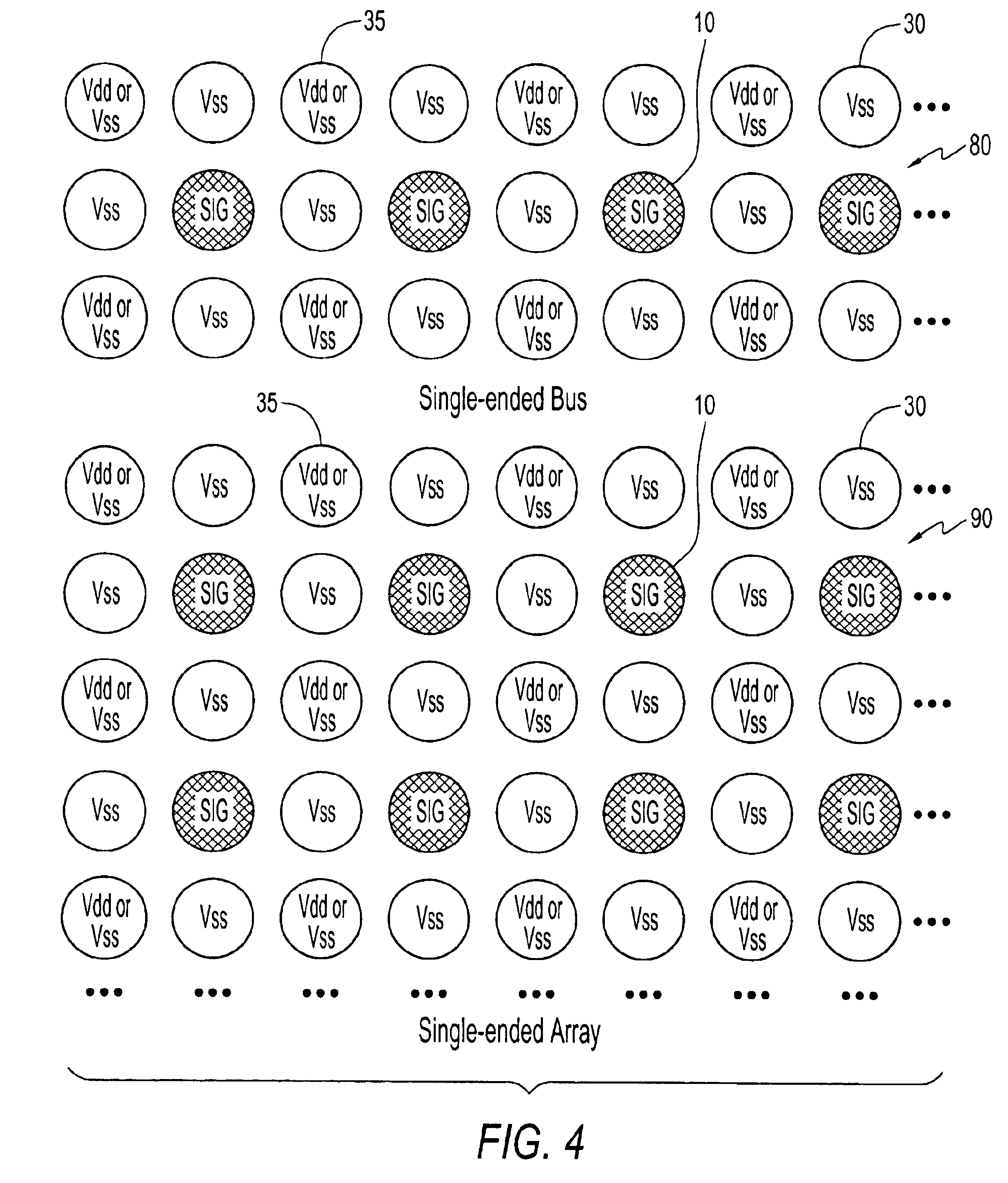High speed I/O pad and pad/cell interconnection for flip chips
a high-speed semiconductor and flip chip technology, applied in semiconductor devices, semiconductor/solid-state device details, electrical devices, etc., can solve the problems of large parasitic capacitance that has a severe impact on the high-frequency characteristics of the semiconductor chip, cross talk and electromagnetic interference, and large parasitic capacitance, etc., to improve signal transmission, avoid reflection and leakage, and improve the effect of electromagnetic shielding
- Summary
- Abstract
- Description
- Claims
- Application Information
AI Technical Summary
Benefits of technology
Problems solved by technology
Method used
Image
Examples
Embodiment Construction
FIG. 4 illustrates a first aspect of the present invention, which comprises a gridded I / O pad concept for single-ended buses 80 and arrays 90 for high-speed or high frequency flip-chip die and packaging applications. The I / O pad configuration comprises signal pads 10, power pads and ground pads 30. Power / ground pads 35 may be either power or ground pads. FIG. 5 illustrates an I / O pad configuration, comprising signal pads 15, power pads and ground pads 30 (power / ground pads 35 may be either power or ground pads) for a differential signal bus 100 and array 110 on a flip chip die. Power / ground pads 35 may be either power or ground pads. Common to each embodiment in FIGS. 4 and 5, is the principle that all of the pads nearest the high-speed signal (SIG) pad 10 or pads (+SIG, −SIG) 15 should be dedicated to ground pads (Vss) 30 while the power / ground pads 35, the ones sitting diagonally with respect to the signal pad 10 or pads 15, should be placed as either power (Vdd) pads or ground (V...
PUM
 Login to View More
Login to View More Abstract
Description
Claims
Application Information
 Login to View More
Login to View More - R&D
- Intellectual Property
- Life Sciences
- Materials
- Tech Scout
- Unparalleled Data Quality
- Higher Quality Content
- 60% Fewer Hallucinations
Browse by: Latest US Patents, China's latest patents, Technical Efficacy Thesaurus, Application Domain, Technology Topic, Popular Technical Reports.
© 2025 PatSnap. All rights reserved.Legal|Privacy policy|Modern Slavery Act Transparency Statement|Sitemap|About US| Contact US: help@patsnap.com



